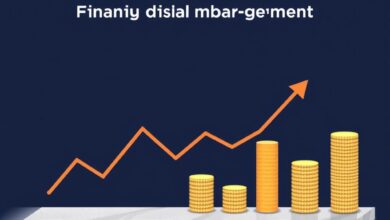What is asset allocation and how to get it right

Allocate at least 60% of your capital into various asset classes to achieve robust diversification. This approach minimizes exposure to any single investment, thereby reducing potential volatility and enhancing overall stability.
Risk management is not just a precaution; it’s a fundamental principle that guides successful financial strategies. By blending equities, bonds, and alternative investments, you create a balanced portfolio that can weather market fluctuations while still pursuing attractive returns.
Regularly rebalance your holdings to maintain your desired risk profile. As market conditions shift, certain assets may outperform or underperform. Adjusting your allocations ensures that you stay aligned with your long-term goals without taking on unnecessary exposure.
Incorporate international investments to further diversify your strategy. Global markets often respond differently to economic events, offering opportunities for growth even when domestic markets face challenges. This can significantly enhance the return potential of your financial endeavors.
Determine Your Risk Tolerance
Assess your comfort with potential losses to shape your portfolio effectively. Utilize questionnaires and self-reflection to gauge your emotional response to market fluctuations. Categorize yourself into conservative, moderate, or aggressive profiles based on your findings.
Conservative investors typically prefer lower returns in exchange for stability. If you lean towards this category, prioritize fixed-income securities and cash equivalents to minimize risk exposure.
Moderate investors seek a balance between risk and return. A diversified mix of equities and bonds can enhance growth while cushioning against significant downturns.
Aggressive investors focus on maximizing returns, often opting for a higher concentration of stocks and alternative investments. Accept that this approach involves increased volatility; hence, regular portfolio reviews are essential to stay aligned with changing market conditions.
Regularly revisit your risk assessment as life circumstances evolve–such as age, income changes, or financial goals–which may shift your tolerance levels. Being proactive in managing your investment strategy is key to achieving desired returns while maintaining an appropriate risk profile.
Identify Asset Classes Benefits
Investors should prioritize understanding the advantages of various asset types to enhance portfolio performance.
- Stocks: Historically, equities provide higher returns compared to other classes. They can significantly boost long-term growth potential but come with elevated volatility and risk.
- Bonds: These typically offer fixed income and are less risky than stocks. They serve as a stabilizing force during market downturns, contributing to overall diversification.
- Real Estate: Investing in property can yield rental income and capital appreciation. This class often acts as a hedge against inflation, further enhancing return prospects.
- Commodities: Gold, oil, and agricultural products can provide protection against inflation and geopolitical instability. Their prices often move independently from stocks and bonds, aiding in risk management.
- Cash Equivalents: While offering lower returns, cash instruments provide liquidity. They are essential for maintaining flexibility and managing short-term needs without exposing funds to high risk.
Diversification among these classes minimizes exposure to individual risks while maximizing potential returns. Investors should regularly review their holdings to adapt to market changes and align with their financial goals.
Rebalance Portfolio Regularly
Adjust your portfolio allocations at least once a year, or more frequently if market conditions change significantly. This practice helps maintain your desired risk-return profile over time.
Monitor the performance of each asset class within your holdings. If one category outperforms others and begins to dominate your portfolio, it can increase overall risk. For example, a strong stock market might lead equities to occupy a larger portion than intended.
Establish specific thresholds for rebalancing. A common strategy is to set a percentage deviation from your target allocation–typically 5% or 10%. When any asset class moves beyond this limit, it’s time to sell some of the outperformers and buy into underperformers.
This systematic approach not only aligns with investing basics but also encourages discipline in decision-making. It prevents emotional reactions to short-term market fluctuations and keeps you focused on long-term objectives.
Consider transaction costs and tax implications when executing trades during rebalancing. Aim for efficiency by choosing tax-advantaged accounts for buying and selling where appropriate.
Regularly assessing your portfolio’s structure enhances alignment with both risk tolerance and investment goals, ultimately paving the way for sustained financial growth.
Monitor Economic Indicators
Regularly track key economic indicators such as GDP growth rates, unemployment figures, inflation trends, and consumer confidence indices. These metrics directly influence market dynamics and asset performance. For instance, rising GDP typically signals a healthy economy, which can enhance the return on equities.
Pay attention to interest rate changes set by central banks. Lower rates usually stimulate borrowing and spending, positively impacting stock markets. Conversely, increases can signal tightening conditions that may lead to lower returns in the equity space while potentially boosting fixed-income assets.
Analyze inflation data closely. Moderate inflation can indicate a growing economy but excessive inflation might erode purchasing power and affect investment returns negatively. Tools like the Consumer Price Index (CPI) provide insights into price movement trends that impact various asset classes differently.
Monitor market sentiment through leading indicators like stock market performance and housing starts. A bullish stock market often correlates with increased investor confidence and higher risk tolerance, enhancing opportunities for diversification across asset types.
Utilize resources like financial news platforms and economic calendars to stay informed about upcoming reports and announcements that could sway market conditions. Being proactive in monitoring these indicators helps adjust strategies promptly, optimizing risk management while aiming for desirable returns.







